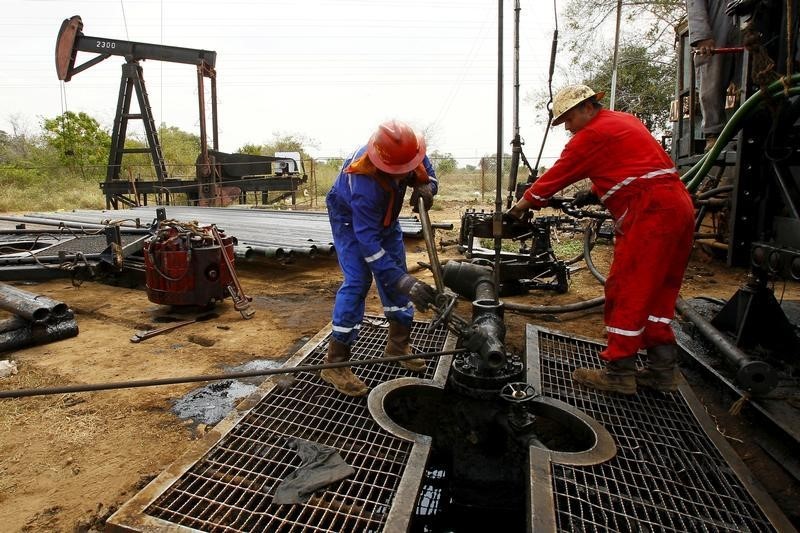By Henning Gloystein
SINGAPORE, Aug 8 (Reuters) - Oil prices rose in early trading on Monday, lifted by reports of renewed talks by some members of the Organization of the Petroleum Exporting Countries (OPEC) to restrain output.
U.S. West Texas Intermediate (WTI) crude oil futures CLc1 were at $42.01 per barrel at 0022 GMT, up 21 cents, or 0.5 percent, from their last close.
Brent crude futures LCOc1 were trading at $44.40 per barrel, up 13 cents, or 0.29 percent.
Analysts said that the price rise came on the back of renewed calls by some OPEC members to freeze production in a bid to rein in output consistently outpacing demand. members including Venezuela, Ecuador and Kuwait are said to be behind this latest reincarnation. But just like previous endeavours, it seems doomed to fail, given key OPEC members (think: Saudi Arabia, Iraq, and Iran) persist in their battle for market share, ramping up exports apace," said Matt Smith of U.S.-based ClipperData in a note.
Yet in the absence of an agreement, a fight for market share via high output and price discounts is still weighing on oil markets.
Iraq has dropped the September official selling price (OSP) for Basra Light crude to Asia by $1.00 to minus $2.30 a barrel against the average of Oman/Dubai quotes from the previous month, the State Oil Marketing Organization (SOMO) said on Monday, making it the latest exporter to drop its prices. oil drilling in the In the United States keeps increasing.
"Another increase in the rig count in the U.S. also weighed on sentiment. The Baker Hughes data show rigs operating in the U.S. are the highest since March (at 381)," ANZ bank said on Monday.
On the demand side, analysts at AB Bernstein said that oil demand growth had been strong in 2015 and the first half of this year, at 2.0 and 1.5 percent respectively, but that the outlook was weakening.
"In July following the UK Brexit vote, the IMF downgraded global growth by 10 basis points (bp) in 2016 and 20 bp in 2017. This has negative implications for (oil) demand," the analysts said.
"We expect that demand growth could slow in the second half of 2016 to around 1.1 percent and slow further in 2017 to a below consensus 1.0 percent on the current global growth outlook," AB Bernstein added.
